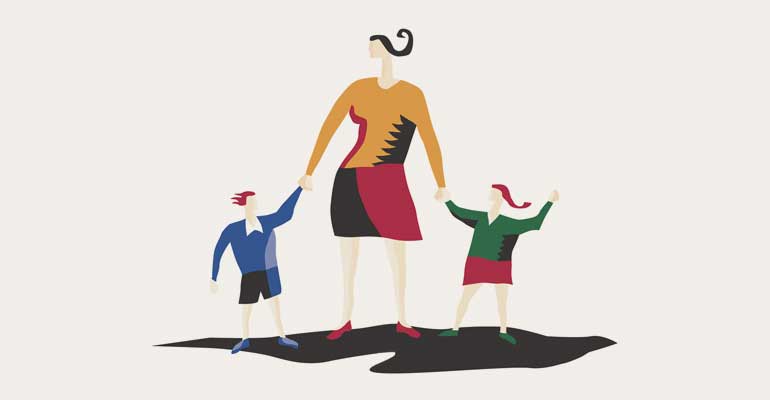At our wedding, friends assured my husband and me that we would create good-looking children. And we believed them. It’s that cloning fantasy: our children would be miniature versions of ourselves, inheriting only our best features. I pictured a child with my green eyes and his thick, black hair. My dreams left out our worst features: big nose, freckles, a long second toe, and a proclivity to indigestion. So many of our dreams (and fears) were shattered along the way: all that talk about how pretty our children would be…and it turned out we couldn’t even have any. When we started considering adoption, I wondered if I could feel like a mother to a child who didn’t resemble me or my husband.
Much as we all like to think of ourselves as consumed with thoughts more lofty than the issue of appearances, looks play into the emotional process before and after an adoption takes place. Adoption is like a blind date in some ways…a permanent one. Early in the process, birth parent and child are faceless to potential adoptive parents. Adoptive parents worry that their child will be ugly or a dud, or both. They care about looks, not because they are hopelessly superficial, but because they want to fall in love with the stranger who will become their child.
Whether or not you like your own looks, they are familiar, and there is something safe about that. It’s almost as if looking alike will ensure a degree of cohesiveness. Look-alike families are assumed to belong together, but families like ours — who don’t match — are seen as curious groupings of individuals. A white woman holding the hand of a little black boy prompts guessing: His social worker? His baby-sitter? His black father’s white girlfriend? His mother? (No, that couldn’t be.)
Minimizing Differences
Once adoptive parents decide that they can parent a child of a different race, they’ve got a more brutal decision to make — one so distasteful, it’s often avoided. They must engage in a shameless discussion about skin pigmentation: how dark is too dark? Many who cross the color line are willing to do so on a continuum of palatability that often reveals an unspoken (and unspeakable) preference for yellow over brown, brown over black, light over dark.
Even within a transracial adoption, it seems, we try to minimize the differences between ourselves and our children. There are many more Asian than African babies adopted by Caucasian parents, as if the yellow-white combination is less transracial than the black-white one. Some of us give ourselves high marks in the discrimination department, but we demonstrate our colorism by preferring brown children (whether Latino, African-American, or mixed race) with European features over black children who share none of our physical attributes. Bizarre as it sounds, white parents of non-white kids remain wishful about family resemblance.
The attraction of opposites seems to apply more to personality than to appearance. Often couples not only share some physical attributes, they even look alike. Blondes gravitate to blondes, and brunettes gravitate to brunettes. Does the wish for same-race matching follow a similar dynamic — like seeking like — or is it outright racism?
I felt like a bigot when I first laid eyes on my son. “He’s so dark,” I thought, and felt ashamed for thinking it. My gut reaction was fueled by gut fear. I was pretty sure I had taken on more than I could handle. Adoption of a white kid would have been enough of a stretch, but we had to go for a baby that came not only out of someone else’s body, but out of someone else’s culture. What kind of pseudo-Peace Corps types were we pretending to be? All I could think was that we were too white to be the parents of someone this black.
A Resounding Yes
Since that rocky start, our lives, as a transracial family, have grown to feel exactly right. Though no one will mistake the boy sitting next to me for my offspring, he certainly feels like my son. A brown child has become familial, so brown children are now familiar. Pink kids look bland to me in comparison to the beautiful mixtures we see in children of color, adopted and not. Is it possible that mixed-race children, like our son, are more beautiful than the population at large? Or does it just seem that way? Perhaps a kind of reverse preference evolves in transracial families, but it is not very different from the old idea of brunettes liking brunettes. If we perceive our family as a beautiful blend, we see the beauty in others’ blends. Put more simply, we are attracted to ourselves.
In the first stages of being a family created by transracial adoption, we were aware of how different from our son we looked. As time has progressed and the emotional cement of family has hardened, we feel unified (even though the world does not always see us as belonging together). Looking nothing like my child causes questions and looks, but it holds no charge as a threat. We are family. Having said that, it is also true that we take great delight in discovering the ways we resemble one another. When people say that my son and I have the same smile, my smile gets even bigger.
Even though I was a closet pro-cloner when I first married, custom designing the image of my offspring, I ended up with a child who is more beautiful than the one his father and I would have made. When I think back to my pre-adoption fear — “Could I love a kid who doesn’t look like me?” — I know the answer now. I know that you can love a child who doesn’t match and that that child will be nothing short of beautiful to you. I also know that you will sometimes forget that you don’t look alike.

